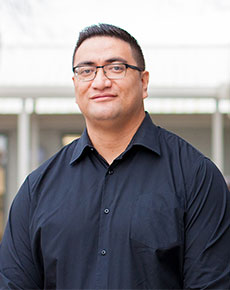Big result for Pacific health research at AUT

AUT’s Pacific Islands Families (PIF) Study has been awarded three research grants, each worth $1.2 million over three years, by the Health Research Council of New Zealand.
The funding will enable vital research on mental health, respiratory health and hearing loss among Pacific peoples in New Zealand. This diverse group is over-represented in adverse health and social statistics, contributing to higher rates of communicable and non-communicable disease.
“This decision reflects the need for robust research to inform public policy and practice, in order to achieve more equitable health outcomes for Pacific peoples,” says Dr El-Shadan Tautolo, Director of the PIF Study.
Established in 2000, the PIF study has tracked 1398 Pacific children from birth to the present day – monitoring their health and development at key stages, as well as socio-cultural influences and the family environment.
All the children involved in the study were born at Auckland’s Middlemore Hospital during the same year.
Having yielded 120 scientific research papers to date, the PIF Study has been instrumental in the advancement of culturally specific information about the Pacific population in New Zealand. Prior to its inception, there was little evidence to support coordinated public health interventions for Pacific peoples.
The study is part of the Centre for Pacific Health & Development Research, housed at South Campus – an emerging hub for Māori and Pacific research in South Auckland.
The three funded projects are:
- Pacific Islands Families Study: Cultural Resiliency and Vulnerability in Mental Health. This research seeks to identify the cultural and acculturative factors, those traits or social patterns adopted from another group, that make Pacific peoples in New Zealand more resilient or vulnerable to mental illness. The project will involve a quantitative survey of 500 Pacific men and women respectively, followed by individual interviews to explore the broader patterns and associations in-depth.
Principal investigator: Dr El-Shadan Tautolo. - Respiratory Health of Pacific Youth: Risk and Resilience Throughout Childhood. This project will investigate the impact of early-life and childhood events on the respiratory health of Pacific youth. The project will recruit participants from the PIF Study, drawing on 17 years of longitudinal data together with planned clinical assessments. It addresses a significant health inequality in New Zealand, given the disproportionate rate of respiratory disease among Pacific peoples.
Principal investigator: Dr El-Shadan Tautolo. - Pacific Islands Families Study: Impact of Hearing Loss on Pacific Youth. Children with hearing impairment struggle to develop the foundation skills required to succeed socially and academically, which can have significant long-term effects on their mental health and vocational choices as adults. New Zealand has a poor track record in the detection and treatment of hearing impairment in childhood, with Māori and Pacific peoples among those most at risk. This research, an extension of the PIF Study, will examine the impact of hearing loss in pacific youth.
Principal investigator: Professor Janis Patterson, co-founder of the PIF Study.
Associate Professor Peter Larmer, Acting Dean of the Faculty of Health & Environmental Sciences, says these are important and neglected areas of research in a high needs population.
“The findings have the potential to make a significant difference to the health of Pacific peoples, and we look forward to the beneficial impact in years to come,” he says.
There are more than 40 Pacific ethnic groups in New Zealand.
Almost 300,000 people, or 7.4 percent of the population, identify with one or more Pacific ethnic groups – predominantly Samoan (48.7 percent), Cook Islands Māori (20.9 percent), Tongan (20.4 percent) and Niuean (8.1 percent).
New Zealand’s diverse Pacific population also has the fastest growing youth segment, with 46 percent under the age of 20.